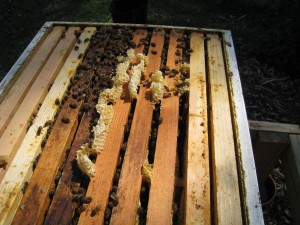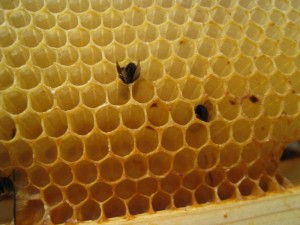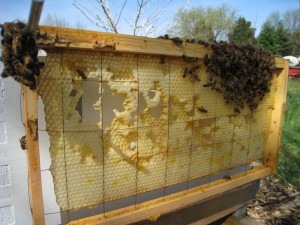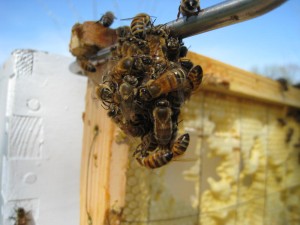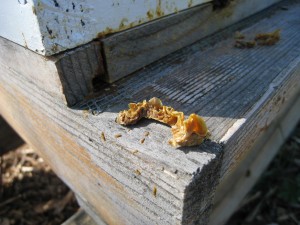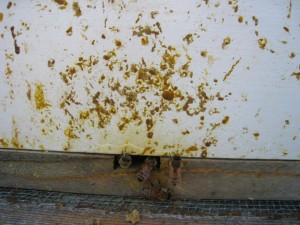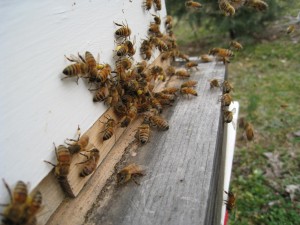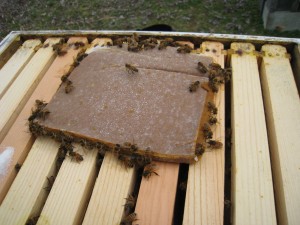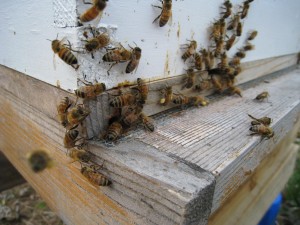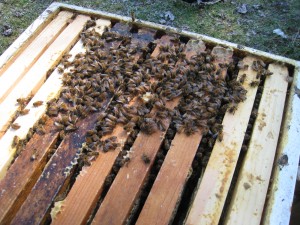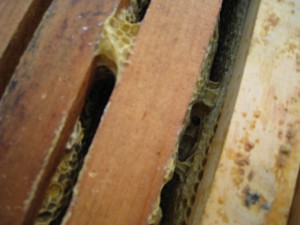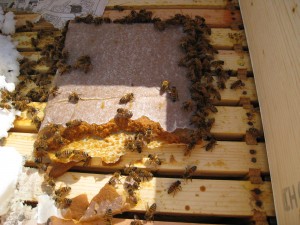Inspecting a Friend’s Hive
My cousin, in Charles City County, picked up two bee hives right around when I did (Spring of 2009), except that he ordered packages from somewhere, whereas I picked up Nuc’s from Tom Fifer, a beekeeper in the Richmond, Virginia area. He received his packages in early April and I received my Nuc’s in mid-May. This gave his bees a distinct advantage (in Nectar Flow time), but I rationalized that I would be getting the stronger bees for the long haul (local bees that have not been overly treated in the last year or two and should have a superior chance of surviving our Winters and our pests.) Over the Winter, one of his hives died, whereas I still have both of mine. But, to be fair, I nursed my weaker hive along and I do not think it would have made it otherwise. He did not do much nursing.
But, he is not sure what is going on in his remaining hive and would like to find the Queen. I told him that I would be happy to lend a hand and have a look. After Easter Church Services, I dropped by his house and we got ready to do the investigation. He immediately suited up, from head-to-toe, in bee gear. He was armed for bear and made no bones about it. He said that one nailed him beneath the eye the other day and he was just walking by the hive! Needless to say, this tidbit had me a tad worried. I have never had them get angry by just hanging around the outside of the hive! So, I did put on my veil and lit the smoker (figured I should be prepared, just in case.)
We opened the hive and began the inspection with little ado. I did note that he was smoking them a bit differently then I did (more smoke, with a lot of little puffs, whereas I simply give it one or two long pulls and typically leave them be.) Regardless, we were able to get into the top deep and immediately discovered empty brood areas in several frames. This was odd to me until he advised that he had done a reversal about 10 days earlier. He simply did it because someone said it should be done in March. This was probably not a good idea (I’ve always been told to go by what your bees are telling you, not by someone else’s schedule.) Regardless, I do not think it did much harm, as this hive had more bees then either of my hives. They were everywhere. There were so many of them that I was sure we would find swarm prep in progress.
The hive inspection was interesting, in that he had made the same error that I did. Lots of propolis was built up between the frames and had to be removed. We also found where his bees had build drone brood comb between the hive bodies. We had to destroy this (to totally do our Spring cleaning.) When lots of drone pupae were exposed, I commented that you could sometimes see mites (or so I had been told) and, lo and behold, I saw one! There, right on one of the drone pupae, was a bit, nasty mite. Upon closer look, I could see the thing moving its legs! Truly a nasty little creature.
By the time it was done, I could see a ton more pollen in his then I had seen in mine. He had about the same honey left (2 frames of capped honey) and, maybe, the same capped brood. He only had one frame that was chock full of capped brood. I think that his reversal may have gotten the queen and the bees a bit out of whack. He asked if he should re-reverse them, but I advised to leave them be for now. We never saw the queen and I was not sure where she was. Regardless, the hives are good and clean now and it will be a breeze to investigate them next time. I figure two weeks and I will go out and have another look with him. This will keep us on top of any possible queen cells and hopefully enable us to find the queen to determine whether another reversal is needed or not.
He also advised that the bees didn’t seem to get riled up, like he was used to. I will say that they got a bit angry when we were destroying the comb between the brood chambers, but they did get over it. I would call these bees gentle. I am guessing our next inspection will be a bit easier.

